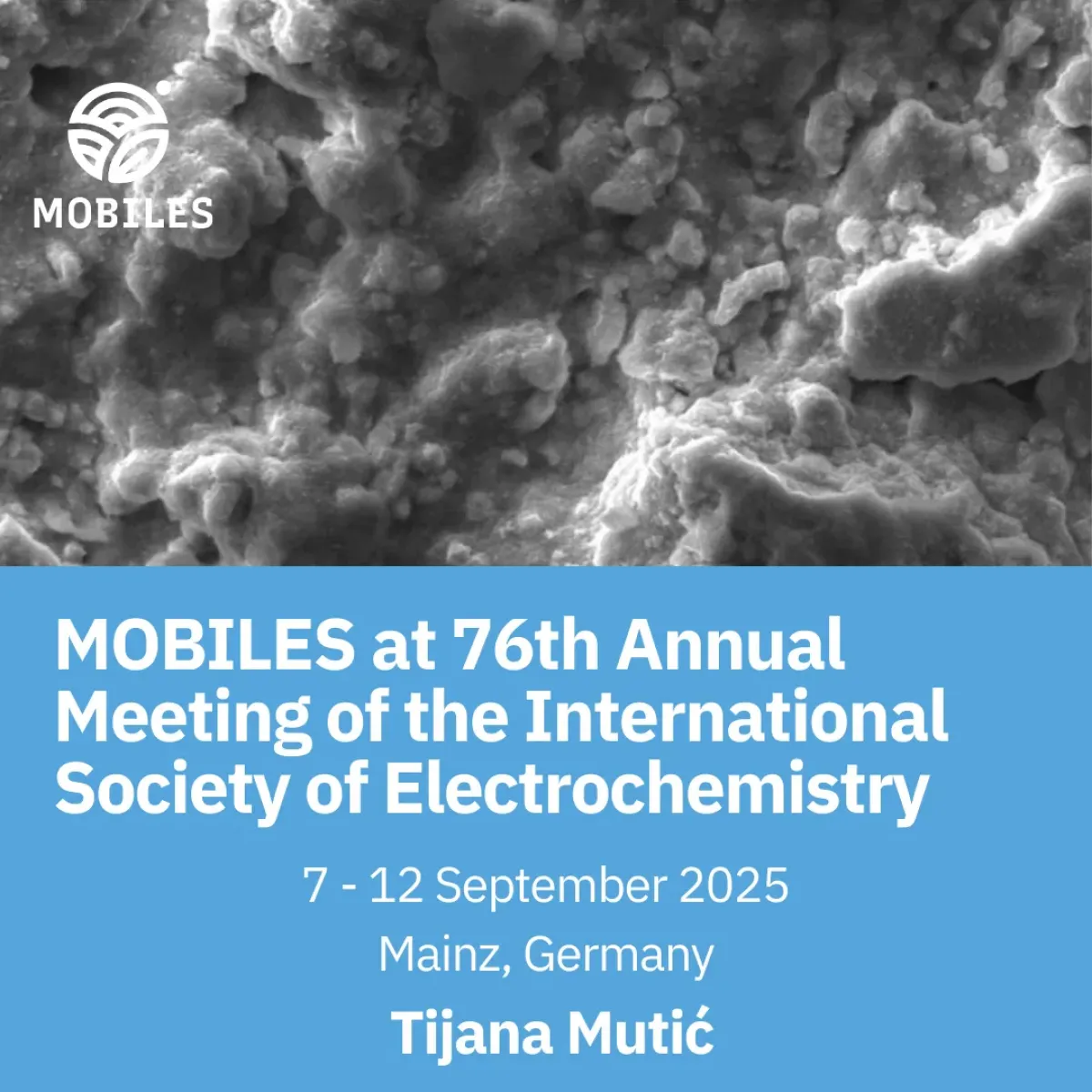
The 76th Annual Meeting of the International Society of Electrochemistry will take place from 7th to 12th September in Mainz, Germany. The focus of this meeting is electrochemistry - From Basic Insights to Sustainable Technologies.
Tijana
Mutić from the Faculty of Chemistry, University of Belgrade will represent the
MOBILES project with two poster presentations.
Tijana Mutić will present a research poster titled:
“Development of Ce-doped Ho₂O₃ Sensitive and Selective Sensor for Determination of Anesthetic Tetracaine” at 76th Annual Meeting of the International Society of Electrochemistry 7.-12.9.2025 in Mainz, Germany.
This
research focuses on addressing an emerging environmental issue—pharmaceutical
pollution. Tetracaine, a commonly used local anesthetic in medical and dental
procedures, has been found in hospital wastewater and can enter rivers and soil
systems. Even in small amounts, such residues may pose risks to both ecosystems
and human health.
To help
monitor and reduce this kind of contamination, the team has developed an
innovative electrochemical sensor using specially designed nanoparticles made
of cerium-doped holmium oxide (Ce-doped Ho₂O₃). These materials were
synthesized using a simple, one-step method and applied to screen-printed
electrodes to create a compact and efficient detection platform.
The sensor
showed excellent results:
· High sensitivity (can detect very low levels of Tetracaine)
· Selectivity (can identify Tetracaine even in the presence of other substances)
· Stability and reusability (suitable for long-term environmental monitoring
This low-cost, portable approach offers a promising alternative to expensive and time-consuming lab techniques like HPLC or LC-MS. It brings us one step closer to real-time, on-site monitoring of pharmaceutical contaminants in water.
In our efforts to create practical tools for environmental protection, Tijana Mutić will be presenting also second poster titled: “Simple Hydrothermal Synthesis of Ce@NiFe-LDH Nanoparticles for Electrochemical Determination of Pesticide Amitrole”
Pesticides
play a major role in modern agriculture, but they also raise concerns about
water and soil contamination. One such pesticide is Amitrole, a widely used
herbicide that helps control weeds but is known to persist in the environment.
Because it dissolves easily in water, Amitrole can seep into groundwater,
rivers, and even the food we eat—posing risks to both ecosystems and human
health.
To help
monitor this pollutant, the research team developed a low-cost, highly
sensitive electrochemical sensor. Using a simple one-step hydrothermal process,
they synthesized advanced nanomaterials that significantly enhance the sensor's
performance.
This sensor is able to detect very low levels of
Amitrole in water, remain selective even in the presence of other common
substances and offer fast and reliable results using portable equipment. Thanks
to its effectiveness and affordability, this sensor offers a promising
alternative to more complex lab-based methods, supporting real-time
environmental monitoring in agricultural and water systems.